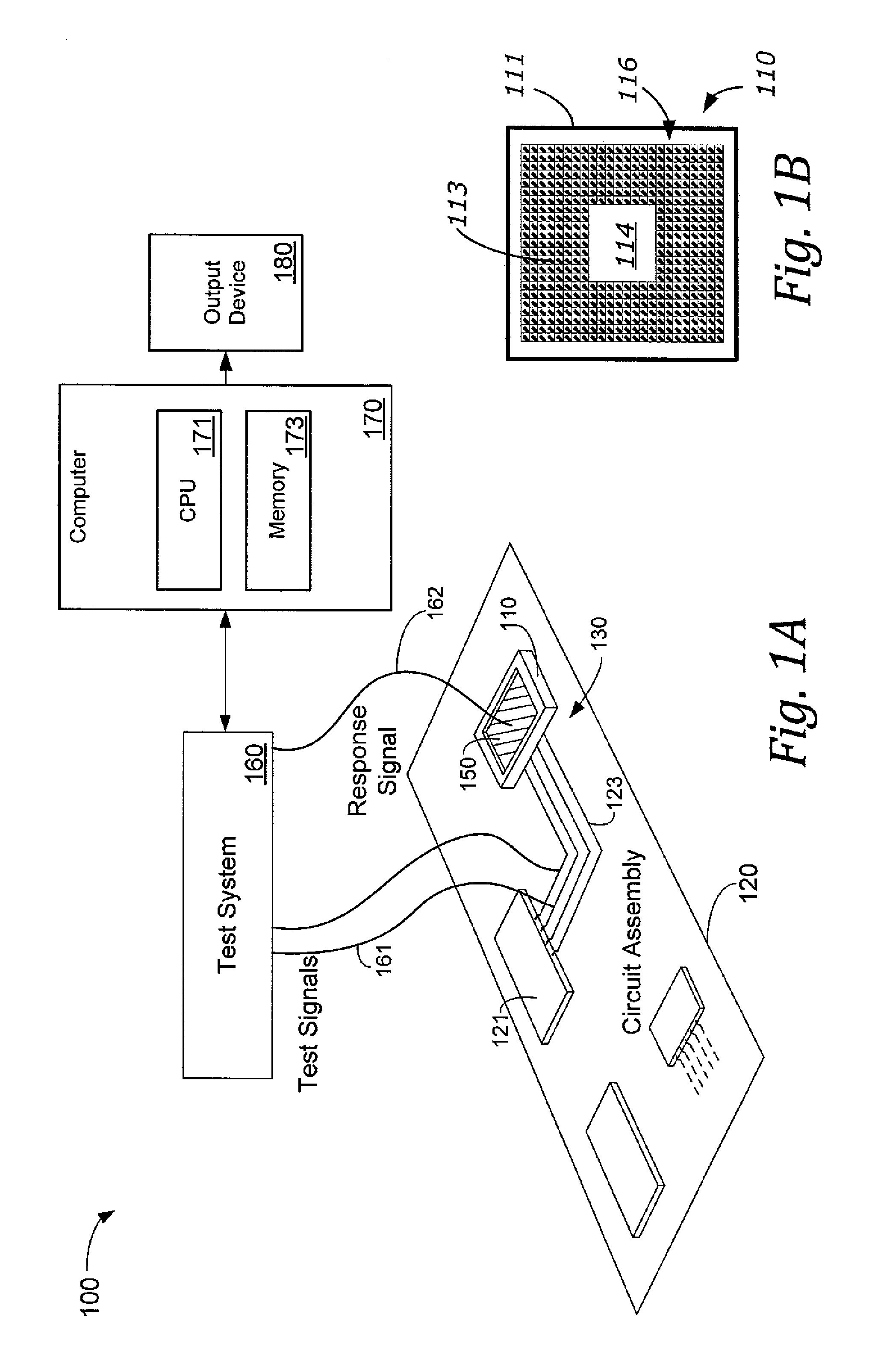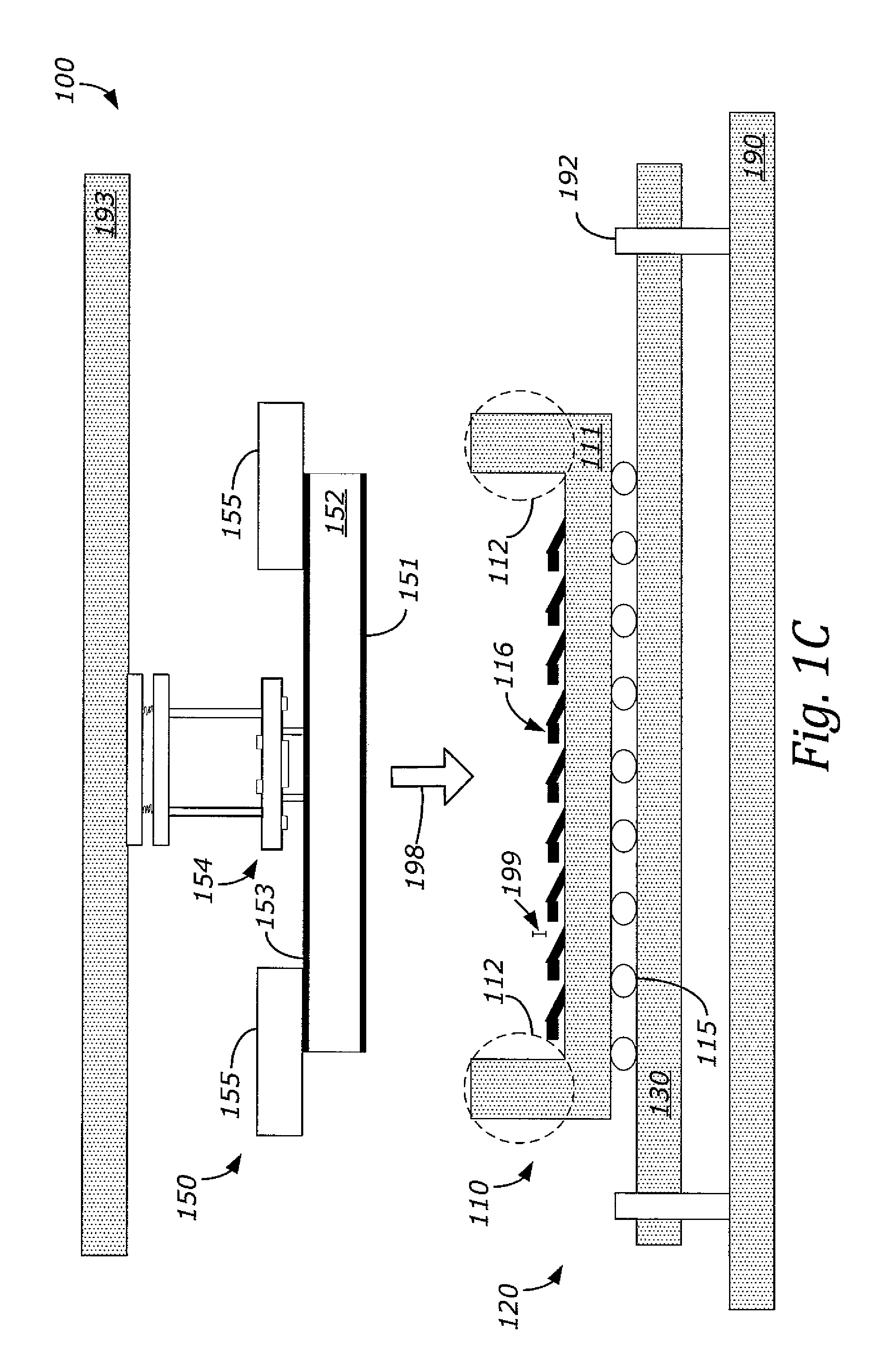Capacitive opens testing in low signal environments
a capacitive test and low signal technology, applied in the direction of resistance/reactance/impedence, instruments, measurement devices, etc., can solve the problems of increasing the likelihood of errors, not widely used for certain types of components, and not widely tested using capacitive test techniques. achieve the effect of improving capacitive coupling and preventing damage to the pin
- Summary
- Abstract
- Description
- Claims
- Application Information
AI Technical Summary
Benefits of technology
Problems solved by technology
Method used
Image
Examples
Embodiment Construction
[0038]The inventor has recognized and appreciated that capacitive opens testing for some types of circuit components, including chip sockets, has been limited because of the risk of damaging the components during the testing process which has led to the test probe being separated from the component under test by too great a distance for a test signal to be reliably detected. The inventor has recognized and appreciated that capacitive testing can be made feasible by reducing the risk of damage to components by using spacers to ensure proper alignment of a test probe with a respective component of a circuit assembly to be tested. Such spacers may be configured to ensure that when a probe assembly is moved into the testing position, a gap of predetermined size exists between the probe assembly and the pins of the component. In addition to ensuring the proper vertical spacing (i.e., a gap), the spacers may be configured to assist in the lateral alignment of the probe with the component....
PUM
 Login to View More
Login to View More Abstract
Description
Claims
Application Information
 Login to View More
Login to View More - R&D
- Intellectual Property
- Life Sciences
- Materials
- Tech Scout
- Unparalleled Data Quality
- Higher Quality Content
- 60% Fewer Hallucinations
Browse by: Latest US Patents, China's latest patents, Technical Efficacy Thesaurus, Application Domain, Technology Topic, Popular Technical Reports.
© 2025 PatSnap. All rights reserved.Legal|Privacy policy|Modern Slavery Act Transparency Statement|Sitemap|About US| Contact US: help@patsnap.com



